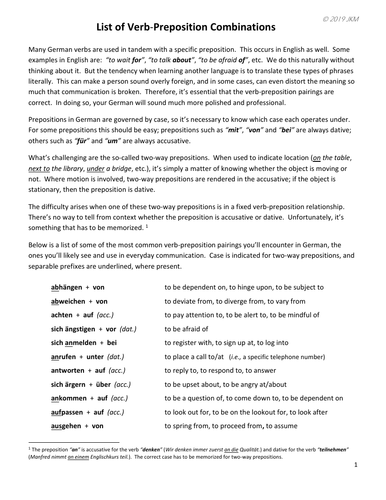

Many verbs in German are paired with specific prepositions. Quite often, these prepositions have nothing to do with location or direction. Examples in English would be: “to think about”, “to wait for”, “to be afraid of”, etc. Knowing which preposition to use is so natural that the native English speaker doesn’t have to think about it at all. It’s automatic. But when the English learner repeatedly uses incorrect verb-preposition combinations, it can cause that person sound overly “foreign”.
The same problem can occur in German if the German learner isn’t aware of which specific preposition(s) to use for a given verb. This handout provides a list of over 60 common German verb-preposition combinations that a student is likely to encounter in normal conversation, writing and media reporting. (Grammatical case is indicated for 2-way prepositions.)
Something went wrong, please try again later.
This resource hasn't been reviewed yet
To ensure quality for our reviews, only customers who have purchased this resource can review it
Report this resourceto let us know if it violates our terms and conditions.
Our customer service team will review your report and will be in touch.